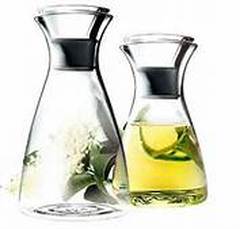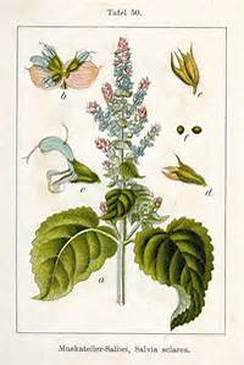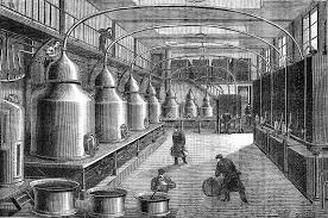Extraction of essential oils
|
What are Essential oils?
Essential oils contain the true essence of the plant it was derived from. An essential oil is a liquid that is generally distilled (most frequently by steam or water) from the leaves, stems, flowers, bark, roots, or other elements of a plant. Essential oils are not the same as perfume or fragrance oils. Where essential oils are derived from the true plants, perfume oils are artificially created fragrances or contain artificial substances and do not offer the therapeutic benefits that essential oils offer. See the What are Fragrance Oils? Usually it could not use essential oils directly without dilution. Essential oils are highly volatile, it will evaporate quickly once exposed to air, must be stored in sealable bottle. |
|
The essential oils be extracted from different plant parts
Flowers - rose, jasmine, orange blossom, chamomile Leaves - eucalyptus, tea tree, lavender, bitter orange leaves, cypress, juniper (coniferous) Resins - frankincense, myrrh, benzoin Roots - vetiver, ginger Bark - cinnamon, Huang Hua Tree heart - sandalwood, rosewood Peel - lemon, lime, grapefruit, bergamot, bitter orange Seeds - caraway, coriander Underground stems - Valerian Flower Top - marjoram Bulbs - garlic |
Extraction of essential oils
|
1. Distillation
According to many herbal books, distillation is the only method of extraction of essential oils. If we use other methods for extraction of essential oils, it should be called essence or absolutes. About distillation process, plant tissue must be heated, there are two methods of heating: Steam Distillation: The plant tissue on a shelf or on the net, to boil the water that is under plants, let steam through leaves, branches, berries, petals and other plant tissues. Direct Distillation: The plant tissue into the water, then the water is heated to boiling. It can be distilled. These two methods can make the plant cell walls rupture to release essence in the vapor state.The steam will be mixed with steam essence of water into a cooling tube, and then back into the liquid state.Finally, it is collected in a larger bottle. Water vapor condenses into water, and the essence will be condensed into essential oils. In Europe, small-scale production oil company still use the old-style equipment and instrument.However, in many areas of mass production of essential oils, distillation apparatus has been made more complex.But the basic principle is still the same. Modern instruments, mostly manufactured of stainless steel, in order to obtain a better quality of essential oil. |
2. SOLVENT EXTRACTION:
According to many aromatherapy research, technically they should not be called essential oils.
These solvent extracted compounds are called "absolutes" and are very concentrated.
Some plant materials, like vanilla, jasmine flowers or rose petals, those are difficult to extract.
Those flowers are too delicate to survive the process of distillation, use another method
to extract their aromatic essence, a process called solvent extraction.
This process utilizes petroleum solvents such as petroleum ether, hexane or toluene;
alcohol solvents such as methanol or ethanol; or carbon dioxide.
As the solvent is added to the botanical it is absorbed and allows the release of the aromatic compounds.
Petroleum Solvent:
Solvent extraction was not recommended for essential oils used for aromatherapy.
Years ago almost all absolutes were extracted in this manner.
However, since residues of the petroleum solvent, like hexane, may cause allergic reactions and skin irritation.
Ethanol Solvent:
The alcohol is evaporated out and a highly concentrated oil known as an absolute is left behind.
Sometimes people will list an absolute, like vanilla, as an essential oil, but absolutes are not technically essential oils.
Petroleum solvents can be very dangerous, ethanol (food grade drinking alcohol) is a rather benign solvent.
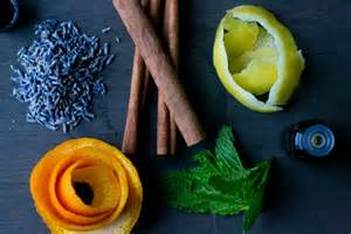
3.Expression
- Expression is a cold pressed method of extraction, which is mostly used in the extraction of citrus essential oils.
- In this process, the oil is forced from the material under high mechanical pressure. Many base oils are extracted in the same way.
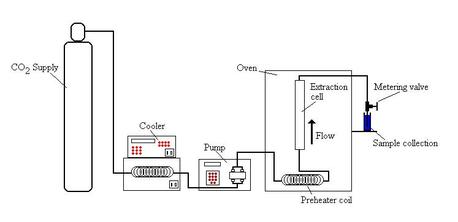
4. supercritical CO2 extraction
This extraction technique is a kind of new and expensive technology that is more efficient than steam distillation, because the process has the ability to capture a broader spectrum of the plant components, giving a fragrance more true to the original plant material without the use of chemical solvents.
Because of the purity of CO2 extracts and since they display some very favorable characteristics not found in essential oils, CO2 extracts are primarily used by the food, body care, and herbal industries, yet CO2 extracts are also excellent for aromatherapy and natural perfumery.
Other benefits are that the extraction process happens at lower temperatures than
steam distillation and that carbon dioxide is nontoxic, odorless, and is easily removed
from the extracted oil at the end of the process.

